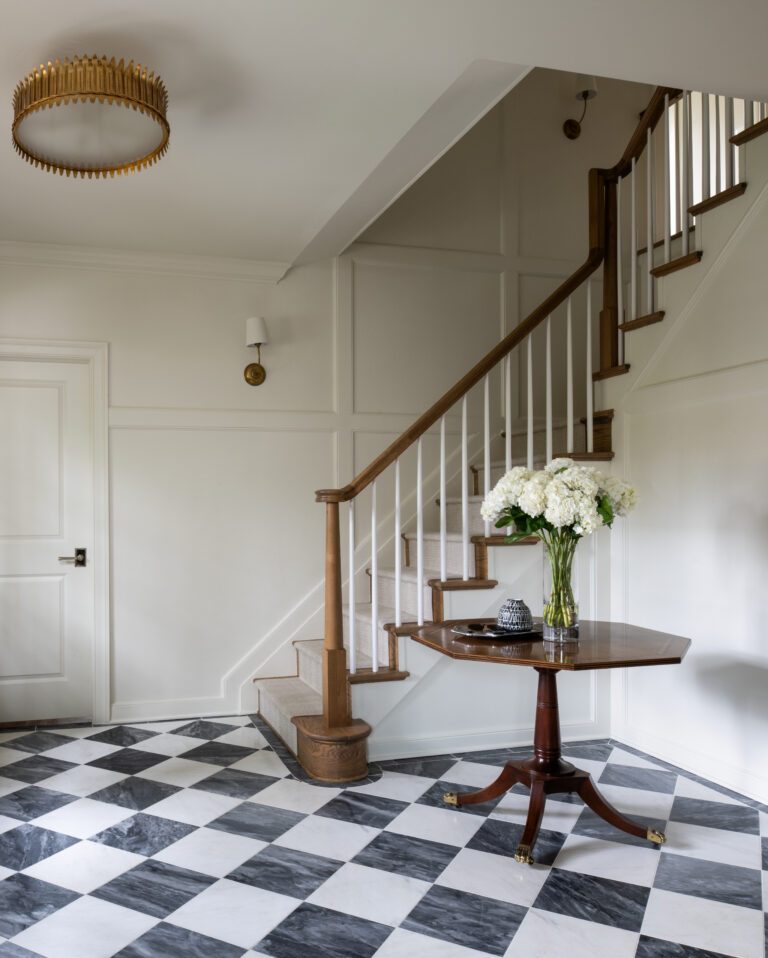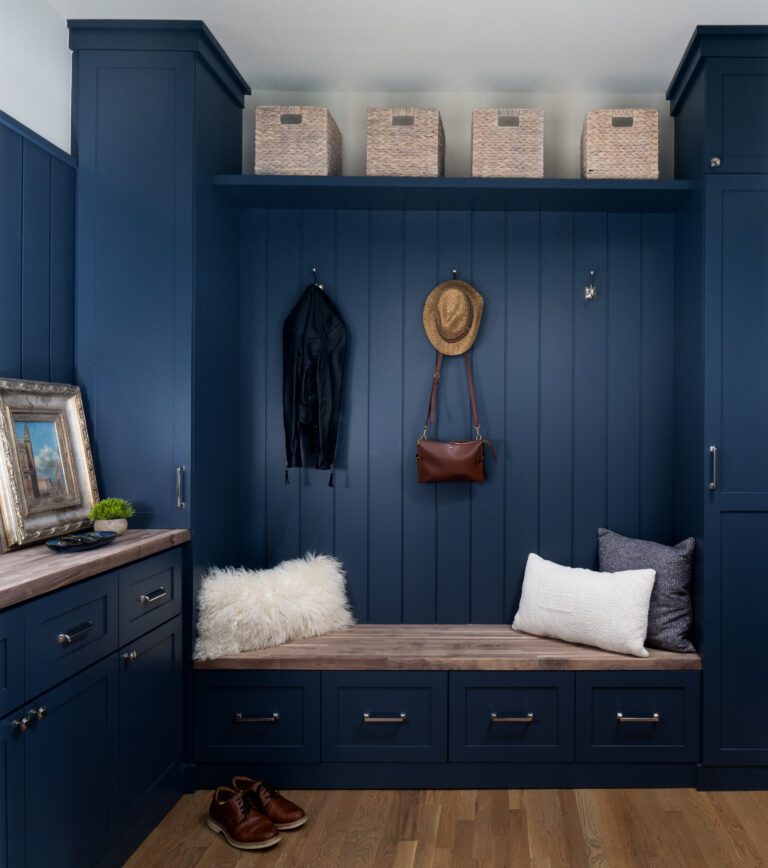Designing an inviting entry way
January 27, 2025
Your home only gets one chance to make a first impression, and it all starts at the entryway. This space, often overlooked, sets the tone for the rest of your home, offering a glimpse of what’s to come. Whether you’re welcoming guests, coming home after a long day, or simply passing through, the entryway should be a warm, inviting, and functional space that makes everyone feel at ease. Designing the perfect entryway doesn’t need to be complicated—here are five essential tips to help you create a space that combines style, comfort, and practicality.
#1 Consider the Space You Have
The first step in designing your entryway is to take a good look at the space you have to work with. Whether it’s a grand foyer or a small nook, the size of your entryway will determine the type of furniture and decor you can incorporate. For larger spaces, you can go bold with large-scale art pieces and a chunky table or dresser that carries some visual weight. Large furniture can help balance the size of the room, making the space feel grounded and well-proportioned.
On the other hand, smaller entryways require a more thoughtful approach to scale. Avoid overcrowding the space with oversized furniture. Instead, opt for smaller, more streamlined pieces that don’t overwhelm the room. If your home has an open floor plan with no designated entryway, you can use the width of your front door as a guide to define the space. A statement rug or a strategically placed console table can help create a sense of separation between the entryway and the rest of the room.
#2 Choose the Right Furniture
One of the main functions of an entryway is to help you transition into your home. The furniture in this space should be both practical and stylish, offering solutions for everyday needs. A few key items are essential for most entryways: a surface for setting down keys, mail, or other items as you enter; a seating option for putting on or removing shoes; a place to hang coats and bags; and a mirror for a last-minute check before heading out.
If your entryway is on the smaller side, you don’t need to fit every single piece of furniture into the space. Choose what works best for you and your family. A bench with storage underneath can serve both as a seat and a place to store shoes, while a small console table can provide a spot for keys and mail. If space allows, add hooks or a coat rack for jackets, and consider a wall-mounted mirror to avoid taking up floor space.
#3 Layer the Lighting
Lighting plays a crucial role in creating an inviting atmosphere in your entryway. A statement overhead light—such as a chandelier or pendant light—can make an immediate impact and set the tone for the rest of your home. This piece doesn’t have to be extravagant, but it should be a fixture that makes a statement and draws attention to the space.
In addition to the overhead lighting, consider adding one or two lamps on a console table or a side table to create a cheery glow. These additional light sources are not only functional, but they also make the entryway feel more welcoming and cozy. Soft lighting can help create a warm, inviting mood that sets the stage for a relaxing entry into your home.

#4 Prioritize Storage
An entryway is a high-traffic area that often serves as a catch-all for bags, shoes, coats, and keys. Keeping this space organized is crucial for both functionality and aesthetics. Consider how you can incorporate storage that will help reduce clutter and maintain the clean, welcoming look of the space.
If you have a larger entryway, a console table with drawers can help store mail and small items out of sight. Baskets or bins are perfect for storing shoes or other items that you don’t want lying around. For smaller spaces, think vertically: wall-mounted hooks or shelves can be used to hang bags, coats, and hats. If you have kids or pets, a bench with hidden storage is an excellent choice, providing a place to store backpacks or leashes without making the space look cluttered.
To keep your entryway feeling tidy, aim to incorporate closed storage whenever possible. This will help keep the area looking neat, while still providing the functionality you need.
#5 Add Color and Art
Your entryway is the perfect place to inject some personality and style into your home. Add color, texture, and interest through art, decor, and textiles. A large, framed piece of art can make a bold statement and set the tone for the rest of the home. Family photos, a mirror with an ornate frame, or even a gallery wall can all add character and warmth to the space.
Consider painting your front door a bold or moody color that makes a statement. This simple update can make your entryway feel unique and inviting. Colors like navy, deep green, or even a rich burgundy can create a striking contrast against neutral walls, giving your home an instantly welcoming vibe.
A rug is another great addition that can help define the entryway and add warmth and comfort to the space. Choose a rug that complements the colors and style of the rest of your home. A patterned rug can add visual interest, while a neutral rug can create a subtle, sophisticated foundation for the space.

Conclusion: Creating an Inviting Entryway
Your entryway serves as the first introduction to your home, making it one of the most important spaces to design thoughtfully. With the right balance of furniture, lighting, storage, and personal touches, you can create a space that welcomes guests in and sets a positive tone for the rest of your home. Whether your entryway is large or small, formal or casual, implementing these tips will help you design a functional and inviting space that makes everyone feel at home from the moment they step through the door.
